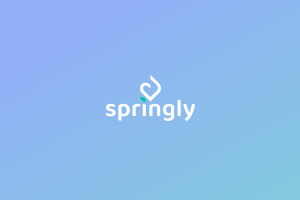The banking sector has undergone massive changes in recent years. Driven by technological innovation and rising customer expectations, both traditional banks and fintech companies are racing to adapt to a rapidly evolving banking landscape.
1. The Digital Transformation of Banking
2. AI and Machine Learning in the Banking Industry
3. Blockchain, Digital Currencies, and Smart Contracts
4. Quantum Computing and the Horizon of Possibilities
5. A New Era for Banking Services
From digital banking to quantum computing, the industry is embracing cutting edge technologies that promise to deliver sustainable growth, operational efficiency, and personalized customer experiences.
The Digital Transformation of Banking
One of the most notable banking technology trends is the shift toward digital transformation. Banks are adopting cloud based solutions, data analytics, and artificial intelligence (AI) to streamline banking operations and business processes. These tools not only support cost savings and faster time to market, but also help enable seamless integration with third-party services and platforms.
Digital payments, embedded finance, and open banking have redefined how customers interact with financial services. With data sharing protocols and APIs, banks can offer tailored products to specific customer segments, supporting financial inclusion and driving valuable insights through advanced analytics.
More information at https://www.altkomsoftware.com/industries/banking/.
AI and Machine Learning in the Banking Industry
AI and machine learning are powering a new wave of innovation. These technologies support fraud detection, risk assessment, and predictive analytics, making it easier to identify significant risks and respond proactively. Financial institutions increasingly rely on automating routine tasks, such as payment processing and data management, allowing staff to focus on more complex, strategic business objectives.
In terms of decision making, AI-driven models process vast amounts of sensitive data in real-time, helping banks and other financial institutions respond to market trends with agility. This capability gives major banks a competitive advantage and enables future banks to meet evolving customer interactions demands.
Blockchain, Digital Currencies, and Smart Contracts
Blockchain technology is another force driving change in the financial sector. It offers enhanced security, transparency, and traceability for digital transactions. More banks are exploring smart contracts to simplify transaction processes and ensure compliance through self-executing agreements.
A related development is the rise of central bank digital currencies (CBDCs). These state-backed digital currencies are designed to complement cash, improve payment processing, and increase trust in digital financial systems. As the world moves toward cashless economies, CBDCs could play a key role in shaping the future of banking.
Quantum Computing and the Horizon of Possibilities
While still in early stages, quantum computing holds immense potential for the banking industry. It could revolutionize data processing, allowing banks to solve problems that were previously too complex or time-consuming. Applications range from portfolio optimization to real-time risk management.
At the same time, regulatory technology (RegTech) is helping banks ensure regulatory compliance with evolving standards. By leveraging emerging technologies, banks can monitor activities, detect anomalies, and meet legal requirements more efficiently than ever.
A New Era for Banking Services
Ultimately, these new banking technologies are not just about efficiency — they’re about transformation. Banks must shift their business models, focusing on customer interactions, digital experiences, and streamline operations. This transformation is essential for staying relevant in a world where digital banking is the norm, not the exception. More information about possibilities at https://www.altkomsoftware.com.
As technological advancements continue to shape the industry, the future of banking will be defined by innovation, integration, and insight. Whether it’s through cloud computing, AI, or blockchain, the goal remains the same: deliver secure, efficient, and personalized banking services that meet the needs of a digital-first world.













 Bitcoin
Bitcoin  Ethereum
Ethereum  Tether
Tether  XRP
XRP  USDC
USDC  Lido Staked Ether
Lido Staked Ether  TRON
TRON  Cardano
Cardano  Avalanche
Avalanche  Toncoin
Toncoin  Wrapped SOL
Wrapped SOL